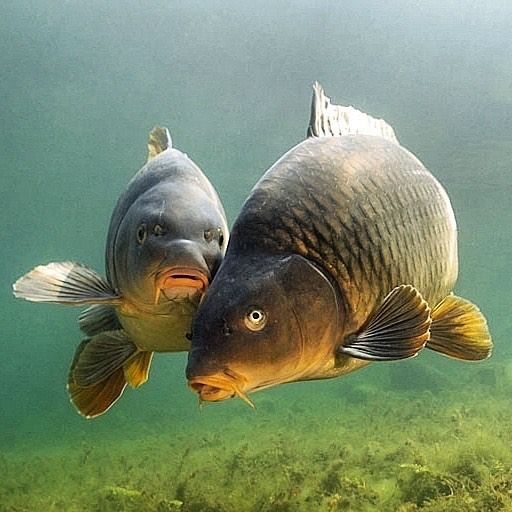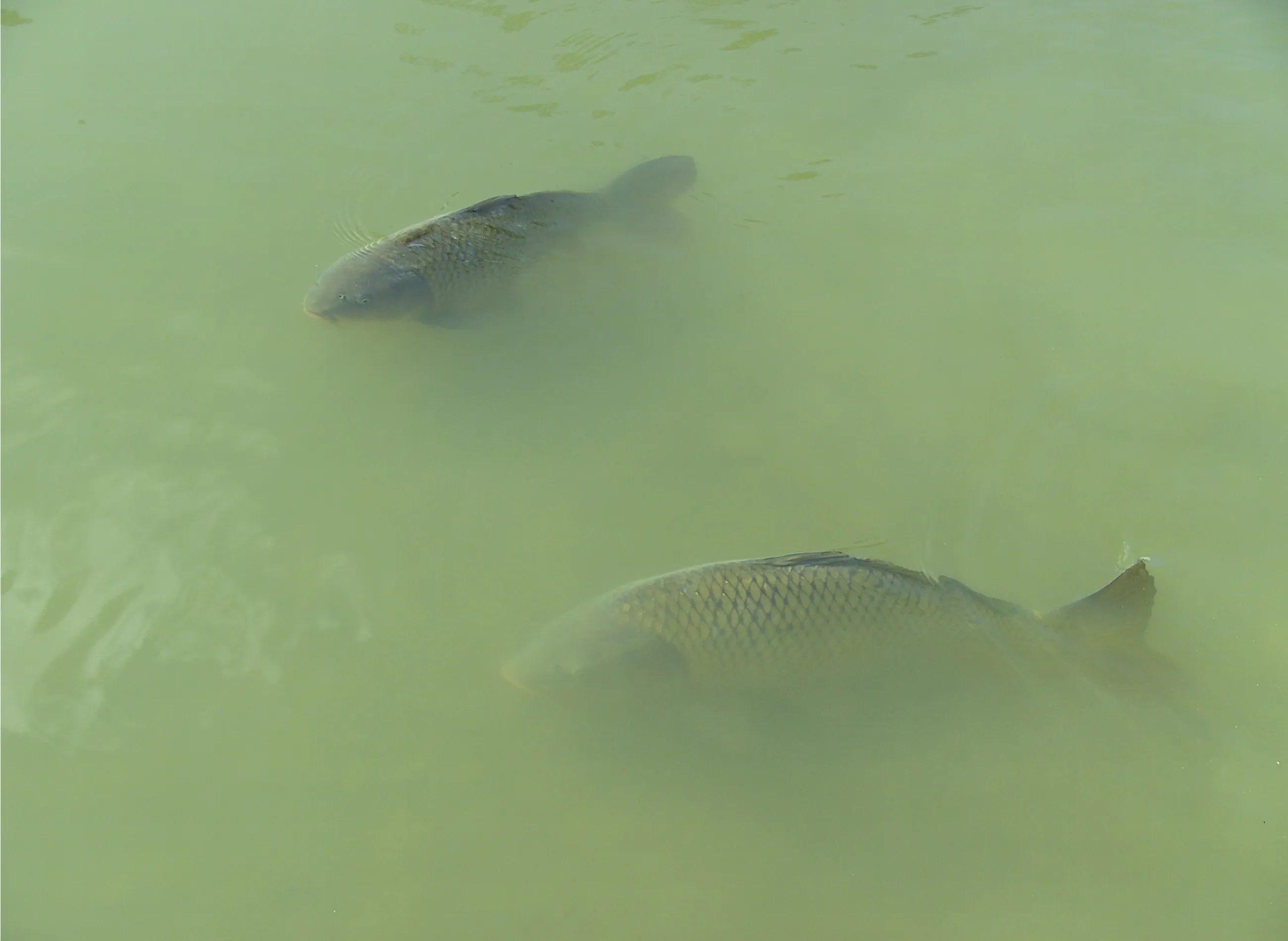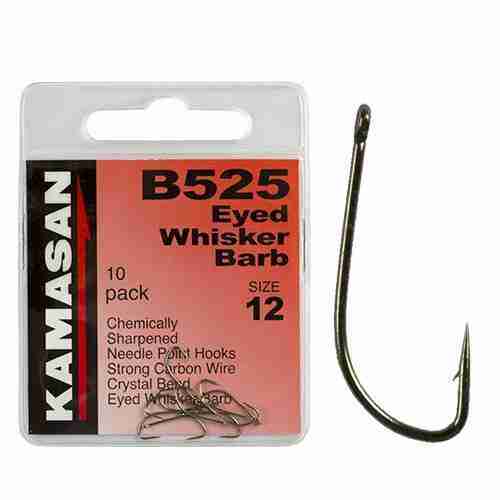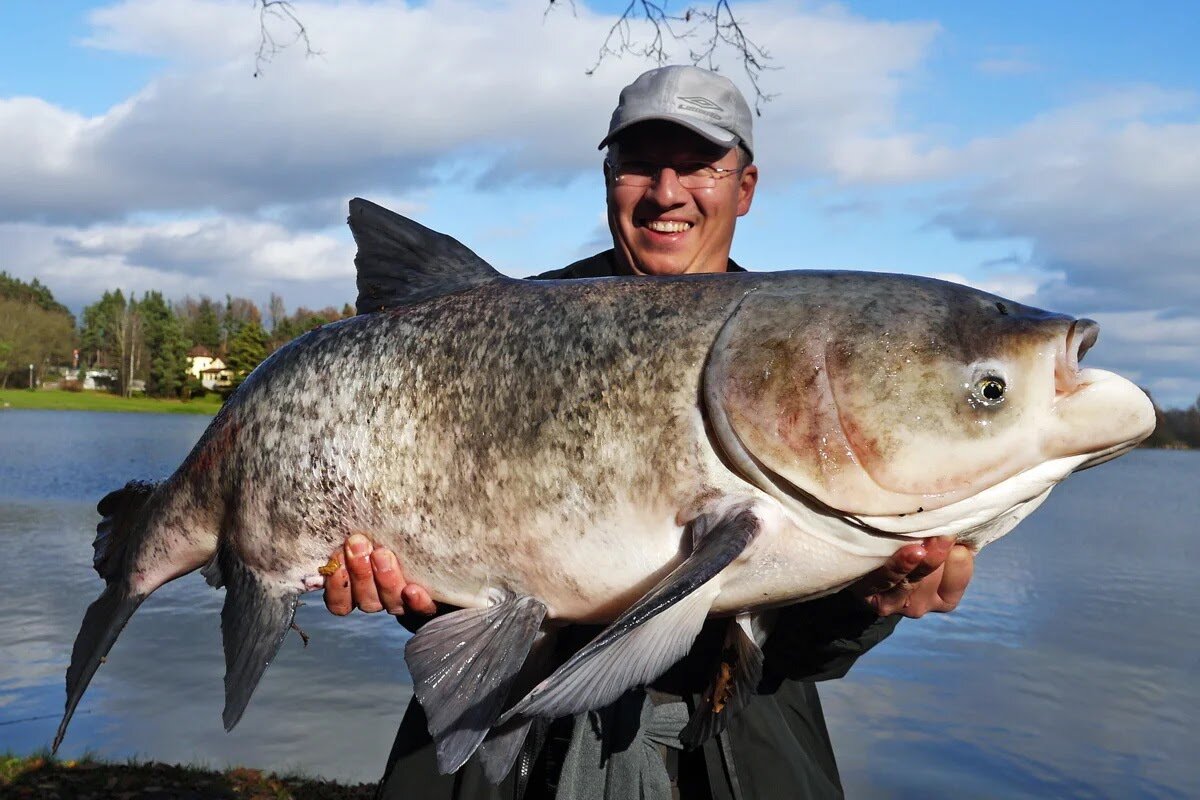
What Are Fish Afraid Of?

10 min read
I still remember that June morning on Lake Lanier like it was yesterday. Clear skies, perfect temperature, textbook conditions—yet the bass had completely locked up. My buddy Tom was chunking a jig into perfect cover and getting nothing. I switched to a finesse worm and immediately started catching fish.
“What the hell am I doing wrong?” he finally asked, frustrated after watching me put my fifth bass in the livewell.
“Nothing wrong with your fishing,” I told him. “But everything about your presentation is triggering their fear response.”
After 30 years on the water, I’ve realized most anglers never truly understand what fish are actually afraid of—and it’s costing them fish on every trip.
Fear Is a Fish’s Primary Survival Mechanism
Let’s get something straight from the jump—fear is the dominant emotion in a fish’s world. Not hunger, not curiosity, not aggression. Fear. Every decision a fish makes is first filtered through the question: “Will this kill me?”
This isn’t some philosophical musing. It’s hardwired survival behavior that evolved over millions of years. Understanding what triggers this fear response—and more importantly, how to avoid triggering it—has doubled my catch rates over the years.
The Five Primary Fear Triggers Every Angler Should Understand
After studying fish behavior across hundreds of waters, I’ve identified five distinct fear triggers that cause fish to reject our presentations. Master these, and you’ll catch fish when others can’t buy a bite.
1. Unnatural Movement Patterns
Nothing—and I mean nothing—sends fish fleeing faster than unnatural movement. In nature, objects move in predictable ways governed by physics, currents, and living behavior patterns. When something moves wrong, alarm bells go off in a fish’s brain.
I witnessed this dramatically while fishing a crystal-clear spring creek in northern Arkansas. I could see dozens of trophy brown trout holding in a deep run. When my buddy’s fly drifted naturally with the current, fish would track it and sometimes eat. When he imparted even the slightest unnatural twitch, every trout in the pool would dart for cover. They wouldn’t return for nearly 20 minutes.
Common Angler Mistakes:
- Retrieving lures too quickly (especially common with beginners)
- Creating jerky, mechanical retrieves instead of fluid, natural movement
- Failing to match retrieve speed to water temperature
- Moving baits against the current in an unnatural direction
Pro Tip: Before fishing any lure, drop it in the water beside the boat or near shore and watch how it naturally falls and moves. This visual lesson will dramatically improve your presentation.
2. Pressure Waves and Vibration Signatures
Fish sense their world primarily through their lateral line—a sensory organ running down their sides that detects pressure changes and vibrations in the water. They can feel you coming long before they see you.
The massive 9-pounder I caught on Okeechobee taught me this lesson. After a cold front, the big female was staging on an isolated pad clump. Three other boats had already fished through the area without success. I killed my trolling motor 30 yards out, used the wind to drift in silently, and made a single long cast. First cast—fish on.
Those other anglers weren’t less skilled. They just announced their presence through pressure waves that triggered the fish’s fear response.
Common Angler Mistakes:
- Running trolling motors too close to fishing targets
- Dropping tackle boxes, pliers, or other equipment on boat decks
- Heavy footsteps, especially on docks or small boats
- Excessive false casting with fly equipment
Pro Tip: In shallow water situations, I’ve started using a push pole or paddle rather than electric motors. The difference in catch rate is staggering, particularly with spooky species like bonefish, redfish, and shallow bass.
3. Shadow and Silhouette Recognition
Fish have evolved specifically to recognize the shadows and silhouettes of their primary predators—birds of prey, mammals along shorelines, and larger fish. Cast the wrong shadow, and they’re gone in a flash.
I was reminded of this painfully during a guided trip in the Florida Keys. We were poling a pristine flat full of tailing permit. My client ignored my instructions to stay seated, stood up to make a cast, and instantly every permit within 100 yards spooked. Three hours of careful positioning, gone in a second because of a human silhouette.
Common Angler Mistakes:
- High-profile fishing, especially standing in shallow water
- Casting shadows directly over target areas
- Wearing bright clothing that creates distinct silhouettes
- Positioning boats directly overhead in clear water
Pro Tip: Position yourself so the sun is in front of you when possible, casting your shadow behind rather than over your target area. It’s a simple adjustment that dramatically reduces spooking fish.
4. Line Recognition and Wariness
Modern fishing line is miraculous stuff, but it doesn’t exist in nature. Fish—particularly pressured fish—have learned to associate this thin, straight intrusion with danger.
I fish a heavily pressured suburban lake near my home that receives tremendous fishing pressure. For years, I struggled until I dropped from 12lb fluorocarbon to 6lb and extended my leader length substantially. My catch rate tripled overnight on the exact same lures because I eliminated a major fear trigger.
Common Angler Mistakes:
- Using line that’s too heavy for conditions
- Failing to match line color to water clarity
- Improper knots that create unnatural angles
- Too short of leaders when using braided mainlines
Pro Tip: For extremely pressured or clear-water fish, I use what I call the “50% rule”—use line that’s 50% lighter than what you think you can get away with. You’ll lose some fish and lures, but catch rates often increase by 200-300%.
5. Frequency of Presentations
Perhaps the most overlooked fear trigger is presentation frequency. Each time we cast to a fish, we educate it—not just about our current offering, but about fishing pressure in general.
During a tournament on Lake Guntersville, I watched a competitor hammer a prime grass edge with 15-20 casts, catching nothing. When he left, I moved in and caught a 6-pounder on my first cast to the same spot. The fish wasn’t responding to my superior lure selection—it simply hadn’t been conditioned to fear my specific presentation yet.
Common Angler Mistakes:
- “Beating the bank” with repeated casts to the same areas
- Returning to the same spots with identical presentations
- Fishing behind other anglers with similar techniques
- Failing to give pressured areas recovery time
Pro Tip: My “three cast rule” has served me well for decades—if I don’t get a bite within three casts to a high-percentage spot, I move on and return later with a different presentation. This preserves the element of surprise and reduces fear conditioning.
The Science Behind “Pressured Water” and Fish Fear Response
The concept of “pressured fish” isn’t just angler superstition—it’s driven by neurological changes in fish brains. Studies have shown that repeated catch-and-release experiences actually create measurable changes in fish behavior and feeding willingness.
I experienced this transformation dramatically on a small private pond I’ve fished for 20 years. When I first started fishing it, bass would hit topwater lures all day long. After years of pressure, those same fish now require finesse presentations, specific conditions, and much greater stealth to catch. Nothing about the habitat changed—the fish simply learned to be afraid.
What’s fascinating is how this fear response changes by species:
Trout develop line shyness and become extremely sensitive to unnatural drift Bass become more nocturnal and structure-oriented Crappie school more tightly and suspend at irregular depths Catfish become more scent-dependent and less likely to chase moving baits Redfish develop larger personal space bubbles and flee from shadows more readily
Understanding species-specific fear responses has completely transformed my approach to pressured waters.
The “Fear Window”: When Fish Are Most and Least Afraid
Fish aren’t equally fearful at all times. Through decades of observation, I’ve identified what I call the “fear window”—periods when fish are naturally more or less concerned about predators.
Low Fear Periods:
- Dawn and dusk transition periods
- Immediately before weather fronts
- During active spawning behaviors
- First 30 minutes of rain after dry periods
- During heavy current or water movement
High Fear Periods:
- Bright, calm, high-sky conditions
- 24-48 hours after cold fronts
- During significant water clarity changes
- Following heavy fishing pressure (weekends)
- During extreme barometric pressure events
I’ve structured my fishing schedule around these windows for years. When guiding clients, I specifically target low-fear periods for novice anglers, saving the challenging high-fear periods for when I’m fishing alone or with experienced partners.
How Water Clarity Affects Fear Response
Water clarity fundamentally changes how fish perceive threats and what they’re most afraid of. In my experience:
Clear Water Fish
- Extremely line shy
- React strongly to shadows and silhouettes
- More sensitive to unnatural movements
- Often require downsized presentations
- Spook at greater distances
Stained Water Fish
- More pressure-wave sensitive
- Less concerned with visual perfection
- Respond better to vibration and sound
- May reject overly natural presentations as too subtle
Muddy Water Fish
- Almost entirely lateral-line dependent
- Fear triggered by intense pressure waves
- Drawn to rather than repelled by vibration
- Extremely scent-oriented

Understanding these differences completely changes presentation strategies. In the clear waters of Lake Tahoe, I might throw a 3” straight-tail worm on 6lb test. In the muddy waters of the Missouri River, I’ll throw a 10” ribbontail on 20lb with heavy scent application. Same species, completely different fear management approach.
Practical Applications: Reducing Fish Fear on Every Trip
After decades of studying fish fear responses, here are my most effective practical applications any angler can implement immediately:
For Bank Anglers
- Shadow Management - Approach spots from the direction of the sun when possible
- Vibration Reduction - Walk softly, especially on docks and hard shorelines
- Distance Casting - Learn to cast farther to reach unpressured fish
- Low Profile Approach - Fish seated or kneeling when possible
- Spot Rotation - Hit each area only once, then move, returning later
For Boat Anglers
- Electric-Only Approach - Kill gas motors well away from target areas
- Drift Control - Use wind and current for silent positioning
- Extended Casting - Fish “long” to avoid boat shadow issues
- Noise Discipline - Soft-sole shoes, padded surfaces, minimal movement
- Sun Positioning - Work with sun angle to reduce shadow casting
For All Anglers
- Line Management - Drop diameter by 25-50% from what most anglers use
- First Cast Focus - Make your first cast to a spot count—it’s statistically your best chance
- Scent Control - Eliminate human scents that trigger predator recognition
- Presentation Speed Matching - Slower in cold water, more erratic in warm
- Confidence Gap Exploitation - Fish when others don’t (rain, wind, odd hours)
Case Study: How Understanding Fear Transformed My Tournament Approach
In 2014, I was struggling in local tournament circuits despite decades of experience. After a particularly brutal summer of poor finishes, I completely rebuilt my approach around fear avoidance rather than pattern development.
The results were immediate and dramatic. I went from middle-of-the-pack finishes to consistent top-5 placements, eventually winning Angler of the Year in our club. Nothing changed about my fishing ability—just my understanding of what makes fish afraid.
My new approach focused on:
- Fishing virgin water that hadn’t seen lures that day
- Using presentations different from what local anglers typically throw
- Approaching spots from unconventional angles
- Fishing during “confidence gaps” when others took breaks
- Giving each spot only a few casts before moving on
The single biggest lesson? Most anglers think the goal is making fish bite. The actual goal is preventing fish from being afraid in the first place.
Final Thoughts on Fish Fear
After three decades pursuing everything from farm pond bluegills to blue-water pelagics, I’ve concluded that understanding fear is vastly more important than understanding hunger. Hungry fish will eat almost anything—if they’re not afraid.
The best anglers I know don’t have better lures or equipment. They’re simply better at not scaring fish. They move differently, cast differently, and think differently—always asking “what would make this fish afraid?” rather than “what would make this fish bite?”
The next time you’re on the water and fish aren’t responding, stop thinking about what they want to eat. Start thinking about what they’re afraid of. Eliminate those fear triggers, and you’ll catch fish when nobody else can.
After all, a fish can go weeks without eating. It can’t survive even a moment without fear.


